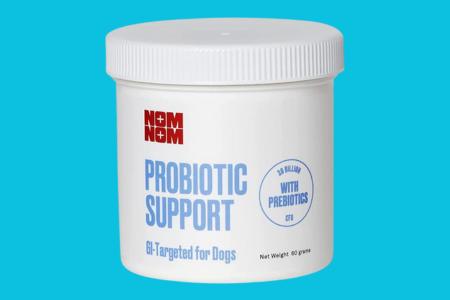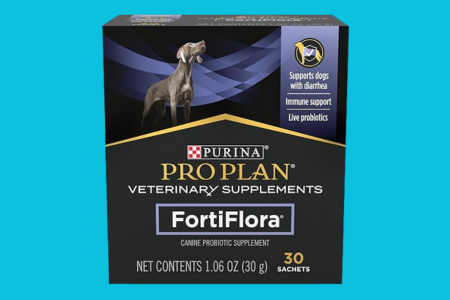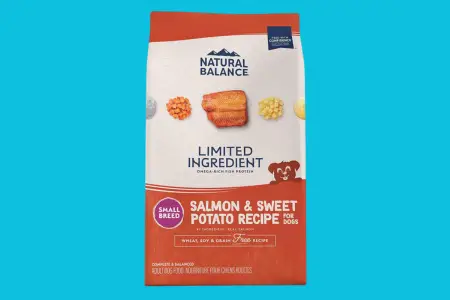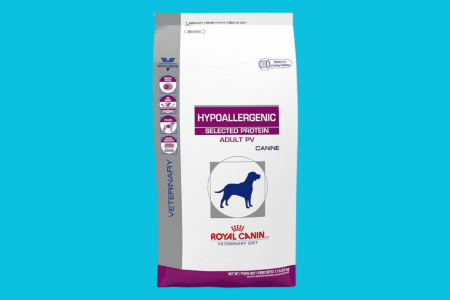Are you a dog owner who wants to ensure your furry friend stays happy and healthy? If so, you’ve come to the right place! In this blog, we will be discussing the top 10 allergy-friendly dog foods that can make a significant difference in your pup’s well-being.
Imagine a world where your dog can indulge in delicious meals without worrying about allergies or intolerances. No more itching, digestive issues, or discomfort. We are here to provide you with a comprehensive list of the best dog food options specifically formulated to be allergen-free.
With so many choices available, it can be overwhelming to find the right food for your dog’s specific needs. That’s why we’ve done the research for you. We will delve into the details of each product, highlighting their key features and benefits, so you can make an informed decision for your furry companion.
Join us as we explore the world of allergy-friendly dog foods and unlock the secrets to keeping your pup happy, healthy, and allergy-free.
Short Summmery
- Food allergies in dogs can lead to various symptoms, and it is essential to seek medical advice for an accurate diagnosis and appropriate treatment.
- Recognizing allergic reactions in dogs, such as skin issues, can help identify the need for allergy-friendly dog foods.
- Allergy-friendly dog foods, including hypoallergenic and limited ingredient options, can support the well-being of dogs with food sensitivities.
- Key ingredients in allergy-friendly dog foods, such as sweet potato and novel proteins, offer alternative sources of nutrients while minimizing the risk of allergies.
1. What are Food Allergies in Dogs?
Food allergies in dogs are common and can manifest in various ways. Understanding the basics of food allergies is crucial to ensure the well-being of your furry friend. Here’s a comprehensive overview of what food allergies are and how they can affect your dog’s health:
What Causes Food Allergies?
Food allergies in dogs occur when their immune system mistakenly identifies certain food ingredients as harmful. The immune system then triggers an allergic reaction in response to these specific ingredients. While any food can potentially trigger an allergic reaction, some ingredients are more commonly associated with allergies in dogs.
Common Food Allergens for Dogs
To help you identify potential allergens, here are some common food ingredients that may cause allergies in dogs:
- Animal proteins (chicken, beef, lamb)
- Grains (wheat, corn, soy)
- Dairy products (milk, cheese)
- Eggs
- Fish
- Certain fruits and vegetables
Symptoms of Food Allergies in Dogs
When a dog is allergic to a specific food ingredient, it may exhibit a range of symptoms, which can vary in severity. Common symptoms of food allergies in dogs include:
- Itchy skin and excessive scratching
- Ear infections or recurring ear problems
- Digestive issues (vomiting, diarrhea, gas)
- Redness or inflammation of the skin
- Chronic or recurrent paw licking
Importance of Accurate Diagnosis
Accurate diagnosis is crucial when it comes to identifying and managing food allergies in dogs. It is strongly recommended to consult with a veterinarian to properly diagnose your dog’s food allergies. Your vet may recommend several approaches, such as an elimination diet or allergy tests, to pinpoint the specific food allergens affecting your dog.

Treatment Options
Once a food allergy is diagnosed, the most effective treatment is eliminating the allergenic ingredient(s) from your dog’s diet. This can be achieved through various methods, including:
Switching to a limited ingredient diet: These diets contain a minimal number of ingredients, making it easier to identify and avoid allergens.
Hydrolyzed protein diets: These diets use protein sources that have been broken down into smaller components, which are less likely to trigger an allergic response.
Novel protein diets: These diets use protein sources that your dog hasn’t been previously exposed to, reducing the risk of allergenic reactions.
2. Identifying Allergic Reactions in Dogs
Allergies in dogs can manifest in various ways, and as a responsible pet owner, it’s crucial to be able to identify the signs of an allergic reaction. Here are some key indicators to watch out for:
Skin Issues:
- Excessive itching or scratching
- Redness or inflammation of the skin
- Presence of rashes, hives, or bumps
- Hot spots or areas of hair loss
Digestive Problems:
- Vomiting or diarrhea
- Irregular bowel movements
- Excessive gas or bloating
- Poor appetite
Respiratory Symptoms:
- Sneezing or coughing
- Wheezing or difficulty breathing
- Nasal discharge
It’s important to note that these symptoms can overlap with other health issues, so it’s crucial to consult a veterinarian for an accurate diagnosis of your pet’s condition. Remember, a professional can provide the best medical advice tailored to your dog’s specific needs.
Once you suspect your furry friend has a food allergy, it’s time to take action. Start by introducing a limited ingredient food that eliminates potential allergens. Consider options like hypoallergenic dog food, which typically contains a unique protein source and avoids common allergens such as grains and soy.
💡 key Takeaway: Identifying allergic reactions in dogs is crucial for their well-being. Look out for symptoms such as skin issues, digestive problems, and respiratory symptoms. Consult a veterinarian for an accurate diagnosis and consider hypoallergenic dog food as a potential solution.
3. Importance of Allergy-Friendly Dog Foods
Understanding the significance of allergy-friendly dog foods is crucial in maintaining the health and happiness of your beloved pup. Food allergies in dogs can lead to various health issues and discomfort, and it’s essential to address them with the right dietary choices. Here, we’ll delve into the importance of allergy-friendly dog foods and how they can make a world of difference for your furry friend.
Catering to Food Allergies:
Allergies in dogs are becoming increasingly common, with reactions ranging from mild itching and digestive upset to severe skin problems and gastrointestinal distress. By opting for allergy-friendly dog foods, you can provide your pet with a diet specifically formulated to avoid triggering allergic reactions. These specialized diets are designed to minimize the potential allergens present in your dog’s food, offering relief from discomfort and improving overall well-being.
Hypoallergenic Ingredients:
Allergy-friendly dog foods often utilize hypoallergenic ingredients that are less likely to trigger allergic reactions. These ingredients are carefully selected to offer a balanced and nutritious diet while minimizing the risk of allergic responses. Components such as sweet potato, limited ingredient sources, and novel proteins (like duck or venison) are commonly used in hypoallergenic dog foods. This ensures your pup receives the necessary nutrients without causing adverse reactions.
Elimination Diets for Accurate Diagnosis:
When food allergies are suspected, elimination diets can play a vital role in determining the specific triggers for your dog’s reactions. Allergy-friendly foods are often geared towards elimination diets, where potential allergens are removed from the diet, and then reintroduced systematically to identify the specific culprits. These diets facilitate an accurate diagnosis, allowing for tailored dietary adjustments to mitigate allergic symptoms effectively.
Health Benefits of Proper Nutrition:
Allergy-friendly dog foods are formulated to provide proper nutrition and support overall health. They typically contain optimal levels of essential nutrients, including fatty acids and basic amino acids, supporting a healthy immune system and ensuring your dog’s coat and skin are in optimal condition. Additionally, by choosing high-quality allergy-friendly dog foods, you can rest assured knowing that your dog is receiving the best possible nutrition to thrive.
Preventing Future Issues:
By addressing your dog’s food allergies through appropriate dietary choices, you can prevent future complications. Left untreated, food allergies can lead to chronic inflammation, digestive disorders, and compromised immune function. Allergy-friendly dog foods work to mitigate these risks
4. Key Ingredients in Allergy-Friendly Dog Foods
When it comes to choosing the best allergy-friendly dog food for your furry friend, it’s essential to pay attention to the key ingredients in the formula. These ingredients play a crucial role in providing a balanced and nourishing diet while also addressing any food allergies or sensitivities your dog may have. Let’s explore some of the key ingredients commonly found in allergy-friendly dog foods:
Novel Protein Sources:
Novel protein sources refer to proteins that your dog hasn’t been previously exposed to, reducing the likelihood of an allergic reaction. Examples of novel protein sources include venison, duck, rabbit, and salmon.
“Using novel proteins like duck and venison in allergy-friendly dog foods helps diversify your pet’s diet and minimize the risk of triggering food allergies or sensitivities.” (Quote)
Limited Ingredient Diets:
Limited ingredient diets feature a shorter list of ingredients, focusing on a single protein source and fewer components overall. This simplification helps identify the specific ingredient causing an allergic reaction in your dog.
“Opting for a limited ingredient diet with only one protein source provides a systematic approach to pinpointing the allergen and managing your dog’s food sensitivities effectively.” (Quote)
Grain-Free Formulas:
While not all dogs are sensitive to grains, for those who are, opting for a grain-free dog food can be beneficial. These formulas eliminate common grains like wheat, corn, and soy, which can trigger allergic reactions in some dogs.
“Replacing grains with alternative carbohydrate sources such as sweet potatoes or legumes in grain-free dog food is a great option for dogs with grain sensitivities.” (Quote)
Hydrolyzed Proteins:
Hydrolyzed proteins go through a process of breaking down the protein molecules into smaller fragments, making them less likely to trigger an allergic reaction. These proteins are often used in prescription-based hypoallergenic dog foods.
“Hydrolyzed proteins provide a safe and hypoallergenic option for dogs with severe food allergies, as the protein structure is modified to minimize the immune response.” (Quote)
Essential Fatty Acids:
Including essential fatty acids like omega-3 and omega-6 in allergy-friendly dog foods can help promote healthy skin and reduce inflammation caused by allergies. Fish oil and flaxseed are common sources of these beneficial fatty acids.
5. Top Allergy Friendly Dog Foods
Finding the right dog food for a pup with food allergies can be a daunting task. However, there are several allergy-friendly options available in the market today that can help keep your furry friend happy and healthy. Let’s explore the top 10 allergy-friendly dog foods that can provide relief from food allergies while still being delicious:
Nom Nom

Nom Nom offers customized meal plans tailored to your dog’s specific dietary needs, including allergies.
Their recipes are made with fresh, human-grade ingredients to ensure quality and flavor.
They offer allergy-friendly options such as limited ingredient diets and novel protein sources.
Purina Pro Plan Veterinary Diets

Purina Pro Plan Veterinary Diets offer a range of hypoallergenic dog foods formulated by veterinarians.
Their formulas are designed to minimize food sensitivities and support the immune system.
Options include hydrolyzed soy protein and unique protein sources for dogs with allergies.
Natural Balance L.I.D. Limited Ingredient Diets

Natural Balance L.I.D. Limited Ingredient Diets are specifically designed for dogs with food sensitivities.
They feature a single protein source and a limited number of high-quality ingredients to reduce the risk of allergic reactions.
Options include different protein sources like fish, duck, and venison.
Royal Canin Veterinary Diet Hydrolyzed Protein

Royal Canin Veterinary Diet Hydrolyzed Protein is a scientifically formulated hypoallergenic dog food.
It contains proteins that have been broken down into smaller components, making it easier for dogs to digest and reducing the risk of allergic reactions.
This food is often recommended for dogs with severe allergies or those who have not responded well to other options.
Hill’s Prescription Diet z/d

Hill’s Prescription Diet z/d is a highly digestible hypoallergenic dog food.
It contains carefully selected proteins and carbohydrates to minimize the risk of triggering allergic reactions.
This food is often recommended for dogs with skin issues or gastrointestinal problems caused by food allergies.
6. Benefits of Dry Allergy-Friendly Dog Foods
Dry dog foods have gained popularity among pet owners, especially those dealing with food allergies in their furry companions. These allergy-friendly dog foods can offer several benefits to keep your pup happy and healthy. Let’s explore some of these advantages:
1. Nutritional Balance: Dry allergy-friendly dog foods are formulated to provide a balanced and complete diet for dogs, ensuring they receive the necessary nutrients to maintain their overall health. They contain a mix of essential vitamins, minerals, and proteins that can support your dog’s immune system and promote optimal well-being.
2. Convenient Storage and Feeding: Dry dog foods are easy to store and have a longer shelf life compared to wet or homemade dog foods. They come in resealable bags, preserving their freshness and allowing for easy portion control during feeding. This convenience makes them a practical choice for busy pet owners.
3. Dental Health: The crunchy texture of dry dog foods can help in maintaining good oral hygiene for your pup. Chewing on the dry kibble can contribute to the removal of plaque buildup, reducing the risk of dental problems such as gum disease and tooth decay.
4. Cost-Effective: Dry allergy-friendly dog foods are often more cost-effective than other types of dog food. They typically come in larger quantities, offering better value for money. This makes them an affordable option for pet owners who want to provide their dogs with high-quality, allergy-friendly meals without breaking the bank.
5. Portability: Dry dog foods are convenient to transport, making them ideal for pet owners who travel frequently or enjoy taking their furry friends on adventures. You can easily pack the required amount of kibble in resealable containers, ensuring your dog’s dietary needs are met wherever you go.
6. Allergy Management: Allergy-friendly dry dog foods are specifically formulated to minimize the risk of triggering allergic reactions in sensitive dogs. They often contain limited ingredients, avoiding common allergens such as wheat, soy, and artificial additives. Opting for a hypoallergenic dry dog food can help alleviate symptoms of food allergies, including itching, gastrointestinal distress, and skin irritations.
💡 key Takeaway: Dry allergy-friendly dog foods offer nutritional balance, convenience, dental health benefits, cost-effectiveness, portability, and effective allergy management for dogs with food sensitivities.
7. Subscription Services for Allergy-Friendly Dog Foods
Subscription services for allergy-friendly dog foods offer a convenient and reliable way to ensure that your furry friend always has access to the best nutrition for their unique dietary needs. These services provide a hassle-free solution for dog owners who are looking for a convenient way to receive specialized allergy-friendly foods delivered right to their doorstep.
Why Choose a Subscription Service?
Subscription services eliminate the need for frequent trips to the pet store or browsing online for allergy-friendly dog foods. By subscribing to these services, you can have peace of mind knowing that your pup’s dietary needs are being met consistently. They provide a seamless experience where you can customize your orders based on your dog’s specific allergies, sensitivities, and preferences.
More Options for Allergy-Friendly Foods
Using a subscription service opens up a world of possibilities when it comes to choosing allergy-friendly dog foods. These services often offer a wide range of options, including limited ingredient diets, novel protein sources, and grain-free formulas. You can easily explore different brands and products to find the best fit for your pup without the hassle of navigating crowded pet store aisles.
Convenience and Time-Saving
One of the biggest advantages of subscription services is the convenience they bring. You can set up recurring deliveries based on your dog’s consumption rate, ensuring that you never run out of food. This saves you time and effort, as you no longer have to worry about making last-minute trips to the store or placing frequent online orders. With subscription services, your dog’s food is delivered directly to your doorstep.
Expert Guidance and Recommendations
Many subscription services have a team of experts who can provide guidance and recommendations based on your dog’s specific needs. They may offer online consultations or have dedicated nutritionists available to answer any questions you may have. This level of support can be invaluable, especially if you’re navigating the complexities of managing your dog’s food allergies and sensitivities.
Tailored to Your Dog’s Needs
Subscription services allow you to tailor your orders to meet your dog’s specific needs. Whether your pup requires a limited ingredient diet, a specific protein source, or a plant-based ingredient list, these services can accommodate your requirements. You can easily select the appropriate options when placing your order, ensuring that your pup’s allergy-friendly food is customized to their dietary restrictions.
💡 key Takeaway: Subscription services for allergy-friendly dog foods offer convenience, a wide variety of options, and expert guidance tailored to your dog’s specific needs.
8. Considerations for Choosing Allergy-Friendly Dog Foods
When it comes to selecting allergy-friendly dog foods, there are several important considerations that can help you ensure the health and happiness of your furry friend. Here are some key factors to keep in mind:
Identify Your Dog’s Allergy Triggers:
Determine the specific ingredients or components that trigger an allergic reaction in your dog. Common allergy triggers include grains, certain proteins (such as beef or chicken), and artificial additives.
Consult with a Veterinarian:
Seek professional advice from a veterinarian who can provide accurate diagnosis and guidance regarding your dog’s allergies. They can help you determine the best course of action and recommend specific hypoallergenic food options.
Opt for Hypoallergenic Dog Foods:
Consider feeding your dog hypoallergenic dog foods that are specifically formulated for dogs with food sensitivities. These foods typically contain limited and unique protein sources as well as easily digestible carbohydrates, such as sweet potatoes or unique plant-based ingredients.
Follow an Elimination Diet:
To identify the specific allergens causing your dog’s symptoms, your veterinarian might suggest an elimination diet. This involves feeding your dog a limited ingredient diet that eliminates potential allergens, gradually reintroducing ingredients one by one to pinpoint the triggers.
Look for Limited Ingredient Dog Foods:
Limited ingredient dog foods can be a good option for dogs with food allergies. These foods contain fewer components, reducing the likelihood of triggering an allergic reaction. They often feature a single protein source, such as hydrolyzed soy protein, and are formulated to be gentle on the digestive system.
Consider Prescription Diets:
In some cases, a veterinarian might recommend prescription diets for dogs with severe allergies or ongoing skin issues. Brands like Purina Pro Plan Veterinary Diet offer specialized formulas designed to address specific dietary needs and support the immune system.
Pay Attention to Ingredient Sourcing:
Ensure the dog food you choose uses high-quality ingredients and sources animal proteins from reputable suppliers. Look for foods that prioritize natural ingredients and exclude potential allergens, such as soy protein or common grains.
Allergy Testing and Regular Monitoring:
If your dog’s allergies persist or worsen, consult with your veterinarian about further allergy testing and monitoring. Continuous observation can help identify any changes in your dog’s condition and lead to adjustments in their diet or treatment.
9. Transitioning to an Allergy-Friendly Dog Food Diet
Transitioning your dog to an allergy-friendly diet requires careful planning and consideration. Whether your pup has been diagnosed with a food allergy or you suspect that certain ingredients are causing an allergic reaction, switching to a hypoallergenic food can help alleviate symptoms and keep your furry friend healthy and happy. Here are some steps to follow when transitioning to an allergy-friendly dog food diet:
Consult with a veterinarian:
Before making any major changes to your dog’s diet, it’s important to consult with a veterinarian. They can help you determine if a food allergy is the root cause of your dog’s symptoms and provide guidance on the best course of action. A veterinarian will be able to recommend specific allergy-friendly dog food brands and guide you through the transition process.
Identify potential food allergens:
To effectively transition to an allergy-friendly dog food diet, you need to identify the specific ingredients that your dog is allergic to. This can be done through an elimination diet, where you gradually remove potential allergens from your dog’s meals and monitor their reactions. Common allergens include grains, soy, dairy, and certain proteins. Keep a close eye on any changes in your dog’s symptoms during this period.
Choose an appropriate hypoallergenic dog food:
Once you have identified the allergens, it’s time to select an appropriate hypoallergenic dog food. Look for brands that offer limited ingredient diets, as these usually contain fewer components that could trigger an allergic reaction. Consider opting for a novel protein source, such as duck or venison, that your dog hasn’t been exposed to before. This helps minimize the risk of an allergic response.
Gradually introduce the new food:
To avoid digestive issues, it’s essential to introduce the new allergy-friendly dog food gradually. Start by mixing a small portion of the new food with your dog’s current food. Over the course of a week or two, gradually increase the proportion of the new food while decreasing the old food. This transitioning period allows your dog’s digestive system to adapt to the new diet.
10. Conclusion
In conclusion, choosing the right dog food for dogs with food allergies is crucial for their overall health and well-being. By following an elimination diet and accurately diagnosing your pet’s allergies, you can determine the best food options to avoid triggering allergic reactions.
When it comes to food options for dogs with allergies, there are various choices available in the market. While hypoallergenic foods that contain unique protein sources like hydrolyzed soy protein or novel animal proteins can be a good option for some dogs, others may benefit from limited ingredient diets that have fewer components to reduce the risk of triggering an allergic response.
Additionally, some dog food brands offer grain-free options or plant-based ingredients like sweet potato, which can provide a hypoallergenic alternative. It’s important to carefully read the labels and ingredient to ensure you are selecting the right food for your pup’s specific needs.
Considering the symptoms of food allergies, such as skin issues or gastrointestinal problems, it is essential to provide a balanced and nutritious diet rich in essential nutrients. Omega-3 fatty acids, for example, can help support a healthy coat and skin by reducing inflammation. Look for dog foods that incorporate a good source of fatty acids to promote skin and coat health.
It is important to note that while some dog food options claim to be hypoallergenic or suitable for allergic dogs, it’s always best to consult with a veterinarian before making any major changes to your dog’s diet. They can provide accurate medical advice and suggest the most appropriate course of action based on your pet’s specific needs.
In summary, when it comes to finding the best allergy-friendly dog food, it’s crucial to consider your pet’s unique dietary needs and follow an accurate diagnosis from a professional. With proper research and guidance, you can ensure your pup is happy, healthy, and free from the discomfort of food allergies.
💡 key Takeaway: Choosing the right allergy-friendly dog food is essential for dogs with food allergies. Consult with a veterinarian to determine the best options based on your pet’s specific needs.
FAQ
What are the ingredients in allergen-free dog food?
Allergen-free dog food typically contains a lower number of ingredients, which can make it easier for dogs to digest. These foods typically contain either meat or meat-based protein, vegetables, fruits, and grains.
What are the considerations for choosing allergen-free dog food?
There are many things to consider when choosing an allergen-free diet for your dog. Some of the things to take into account include the ingredients, the processing, and the packaging.
What are the different types of food allergies in dogs?
There are different types of food allergies in dogs, including food allergies to specific proteins, grains, or nuts. Some common food allergies in dogs include food allergies to beef, chicken, pork, milk, eggs, and soy. If your dog has a food allergy, it’s important to keep him or her on a safe, allergen-free diet.
What are the benefits of allergen-free dog food?
Allergy-free diets are a great way to keep your dog healthy and happy. When you feed your dog a diet that doesn’t contain any allergens, it can help to prevent common allergies and asthma in your pup. Plus, allergen-free food is often lower in calories and can help to keep your dog’s weight under control.
What are the symptoms of food allergies in dogs?
Food allergies in dogs can cause a wide range of symptoms, from mild to life-threatening. Symptoms may start shortly after your dog eats the allergen, or they may develop over time. Many times, food allergies are mild and go unnoticed. However, food allergies can also cause severe health problems, including anaphylaxis, which is a life-threatening allergic reaction. If you think your dog may have food allergies, talk to your veterinarian.
How do I transition my dog to an allergen-free diet?
There is no one-size-fits-all answer to this question, as each dog will have to be individually Transitioned to an Allergy-Free Diet. However, some tips to help you Transition your Dog to an Allergy-Free Diet include: Feed your dog a high-quality, all-natural diet that is grain-free, dairy-free, and protein-rich. Transition your dog gradually over a period of several weeks or months, starting with the elimination of one allergen per week. Provide your dog with plenty of fresh water and plenty of exercise.
What are the different types of subscription services for allergen-free dog food?
There are a few different types of subscription services for allergen-free dog food, each with its own benefits. One example is monthly delivery, which allows you to have a consistent supply of allergen-free food without having to worry about shopping or cooking. This type of service is perfect for people who have trouble keeping track of grocery shopping or have a busy schedule. Another option is a subscription box, which sends a box of allergen-free food every month. This is a great choice for people who have a dog that is allergic to certain foods. The last option is a feeder service, which allows people to feed their dog food from a bowl on their porch or in their backyard.
- Smelly House Because of Dog? Take These Hygiene Tips - May 20, 2025
- How to Introduce a Dog To a Cats Without Chaos - May 6, 2025
- 4 Best Cavapoo Rescues in the UK 2024 - April 5, 2024








